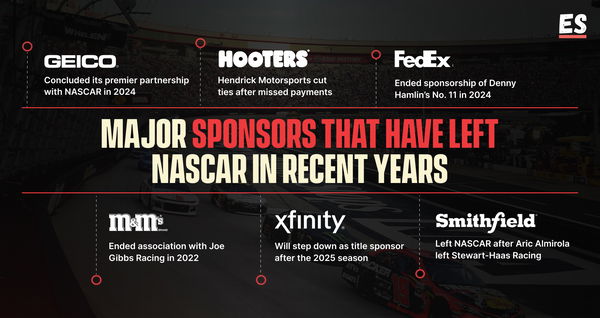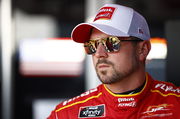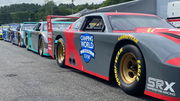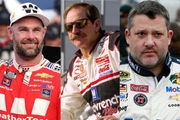

NASCAR has a long history with big-name sponsors. We’re talking about brand endorsements on car livery, trackside billboards, and even drivers’ firesuits filled with company logos. For years, Winston sponsored the Cup Series, while iconic team-driver partnerships such as Jeff Gordon and DuPont, and Dale Earnhardt and Goodwrench, became well-known tie-ups. However, that era seems like a thing of the past.
Watch What’s Trending Now!
With corporate giants such as FedEx and M&M changing strategies and digital media becoming more prominent than ever, the fan demographic has also evolved.
Teams have been forced to pivot from mainstream revenue models, and the sport finds itself at a sponsorship crossroads. But the big question is, can the new ‘evolved’ model prove to be sustainable in the long run?
ADVERTISEMENT
NASCAR’s three national series have consistently had title sponsors for decades. It all started with Anheuser-Busch from 1982 to 2007, followed by Nationwide (2008-2014) and Xfinity (2015 to present).
And, the sport has also seen some of the most legendary driver-sponsor partnerships over the years, such as
- Chase Elliott and NAPA
- Joey Logano and Pennzoil
- Martin Truex Jr. and Bass Pro Shops
ADVERTISEMENT
It created a culture where fans became as invested in the brands as they were in their favorite drivers. Buying Budweiser, Cheerios, or Lowe’s wasn’t just casual shopping, but showing loyalty, and that kind of brand-fan connection became part of the sports’ DNA.
ADVERTISEMENT
Today, the landscape is changing
Running a NASCAR team today costs tens of millions of dollars every year. At the same time, big-name sponsors are becoming increasingly conservative about spending money, as they’re looking for clear returns on their investment. Dwindling viewership numbers since the mid-2000s have made companies feel NASCAR doesn’t deliver the same bang for their buck like it did back in the good ol’ days.
And, maybe that is why we’ve seen the likes of Home Depot, Lowe’s, Target, Office Depot, M&M, UPS, and most recently, FedEx withdraw from the stock car racing world.
Instead of one giant title sponsor, NASCAR now uses a ‘Premier Partner’ system, which allows multiple major brands to partner with the series instead. For the Cup Series, Coca-Cola, Busch Light, and Xfinity share the roles. As for the second tier, Xfinity will be leaving as the title sponsor, with O’Reilly Auto Parts taking over in 2026.
ADVERTISEMENT

ADVERTISEMENT
Lately, NASCAR has been attracting companies that haven’t been a part of the sport before. We’re talking about tech firms, streaming services, and fintech brands that have been stepping in. For example, Amazon Prime stepped in as Chase Elliott’s sponsor and also broadcast a handful of races as part of the new media rights agreement.
Top Stories
‘RIP’: NASCAR World Crumbles in Tears as 39-YO Former JR Motorsports Driver Passes Away

NASCAR President Kicks Up ‘SRX’ Firestorm With Courtroom Claim Fans Refuse to Accept

Dale Jr’s Former Driver’s Death Devastates NASCAR Garage as Brad Keselowski Shares Heart-Ripping Tribute

Dale Earnhardt & Tony Stewart Dethroned as SVG Shatters NASCAR Benchmark to Stand Alone in History

55-YO NASCAR Driver’s Untimely Death Shatters Racing Community

The culture is changing. Hence the sport.
It’s no secret that NASCAR’s core fans are changing.
ADVERTISEMENT
“I think it’s a culture problem, and I say that in regard to the world culture. In the ’80s and ’90s, you had a bunch of Hot Rod guys who were cool with souping up their 1970s, 1980s street rods. A lot of those guys are aged out,” Kyle Busch said, meaning that the sport wants to connect with younger and more diverse audiences, resulting in a shift in the way sponsors present themselves, too.
We know how social media, streaming, and other digital avenues are a big part of sponsorships. For brands, they care as much about a driver’s following on TikTok or Instagram as they do about their on-track performances, with the likes of Coca-Cola and GEICO focusing heavily on digital campaigns and online activations.
Additionally, NASCAR is facing competition from Formula 1, as Netflix’s Drive to Survive is attracting younger fans to the motorsports discipline worldwide. This means that stock car racing has to work harder to compete for global sponsorships, thanks to the cutthroat competition. Because without big, long-term sponsors, smaller teams are turning to small, niche brands and social-media-oriented companies.
ADVERTISEMENT
NASCAR running out of related sponsors?
The structure of such deals is also pretty creative, with drivers being expected to participate in digital campaigns, film behind-the-scenes content, and take part in online promotions. Drivers are more than just athletes competing on the racetrack; they’re influencers.
The likes of Denny Hamlin and Dale Earnhardt Jr. have their own personal brands, thanks to social media and podcasts, to attract sponsors directly.
ADVERTISEMENT
However, there is also a pretty big downside to the new model. Denny Hamlin explained it perfectly when he said, “The world has changed. We don’t have sponsors in our sport now that are on these cars for 20-some races. When you’ve got sponsors on the car for three-four races, they’re not going to give up one of their races to change their logo, change their colors, change their brand like that’s you’re not not giving them value doing that.”
This season, Hamlin has had as many as five different sponsors, a far cry from his two-decade-long sponsorship with FedEx. The likes of Bob’s Discount Furniture, ampm, King’s Hawaiian, and National Debt Relief have joined in, and their names have featured on the No. 11 Toyota. But the new model just goes to show how the sponsorship landscape has changed over the years and has become less stable for drivers and teams. But is it sustainable
Team owners are voicing their concerns
Many team owners feel that the current business model is broken in NASCAR. In fact, 23XI Racing and Front Row Motorsports even went to court, accusing the sanctioning body of ‘monopolistic practices’ after refusing to sign the charter proposal.
As things stand, teams only get 25% of the racing revenue, while the tracks take 65% and NASCAR keeps 10%. However, without more money from media rights, teams, especially in the Xfinity and Truck Series, may struggle to survive on sponsorships alone.
Then there’s also the matter of brand consistency. Back in the day, fans used to associate certain sponsors with specific drivers for years, but the landscape has changed now. With sponsorships constantly rotating, NASCAR drivers and teams risk losing their identity since the cars look different after every few races.
Loyalty is an important aspect for companies to get a return on their investment, but fans feel little affiliation with brands sponsoring their favorite drivers if they come and go all the time.
Here’s a comparative lens
NASCAR’s sponsorship model is very different from other sports. For example, Formula 1 has a centralized model with global sponsors like Rolex, Heineken, and Aramco. The amount of revenue from such deals is significantly higher, and the deals are long-term. In comparison, the stock car racing series’ approach looks very fragmented.
As for the NBA and NFL, both leagues are less reliant on sponsorship money. They have diversified their income streams through media rights, tickets, and merchandise, a business model that NASCAR should consider adopting. As for IndyCar and other series, they often struggle to keep hold of sponsors, and teams often shut down when the money dries up. So far, NASCAR has managed to avoid that level of instability, but there is always an inherent risk if the sponsorship money continues shrinking.
A sponsorship beyond logos and billboards
NASCAR is testing out new forms of sponsorship that go beyond the usual logos on cars and billboards near the tracks. The ideas that the sanctioning body is going with are;
- Exploring digital advertisements on cars during TV broadcasts, with brands changing in real time.
- Exploring augmented and virtual reality experiences, giving fans the chance to feel what it would be like to be inside a racecar while still being exposed to sponsorship messages.
- Considering limited-edition digital collectibles, such as NFTs tied to certain drivers or races, and opened the door for micro-sponsorships, allowing brands with a limited budget to also find their place in the sport.
Meanwhile, the media rights remain NASCAR’s safety net.
Worth an estimated $1.1 billion per year, the deal gives teams a steady source of income from FOX, NBC, Amazon, and TNT Sports. However, with tracks getting the biggest slice of that pie, teams are still reliant on sponsorships to remain sustainable. But perhaps 23XI Racing and Front Row Motorsports winning their lawsuit against NASCAR might change the split.
Conclusion
NASCAR has been built from sponsorships, and the connection between drivers, brands, and fans is what has made the sport unique. However, today, the costs are higher than ever, and competition from other sports makes it so much more difficult.
Ultimately, it looks like what has traditionally been the sport’s strength, its deep link to sponsors, can also become its biggest challenge going forward. NASCAR may have to change the way it partners with companies, and consider tie-ups not just in the form of logos on cars but as long-lasting partnerships that emotionally appeal to fans on every platform.
ADVERTISEMENT
ADVERTISEMENT
ADVERTISEMENT

